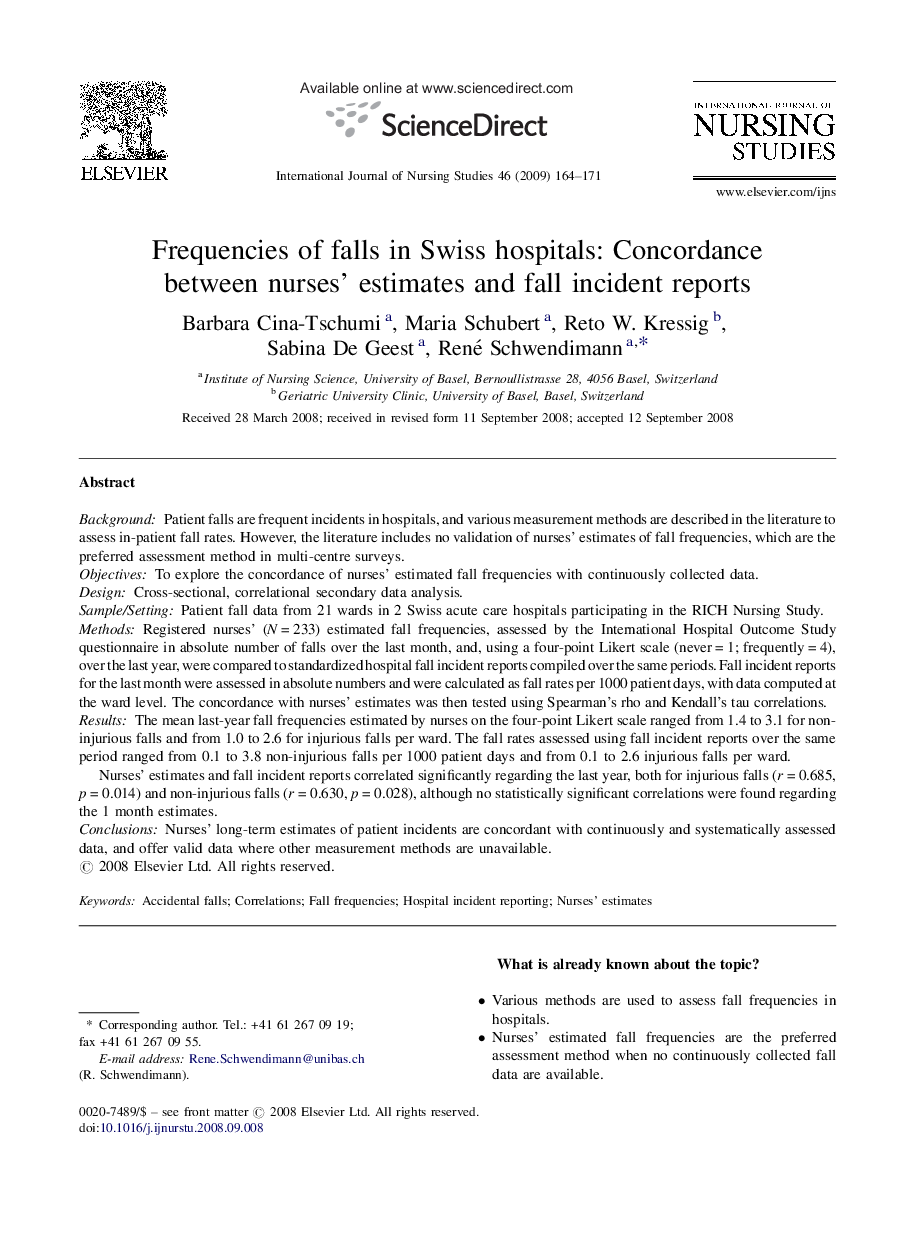| Article ID | Journal | Published Year | Pages | File Type |
|---|---|---|---|---|
| 1077310 | International Journal of Nursing Studies | 2009 | 8 Pages |
BackgroundPatient falls are frequent incidents in hospitals, and various measurement methods are described in the literature to assess in-patient fall rates. However, the literature includes no validation of nurses’ estimates of fall frequencies, which are the preferred assessment method in multi-centre surveys.ObjectivesTo explore the concordance of nurses’ estimated fall frequencies with continuously collected data.DesignCross-sectional, correlational secondary data analysis.Sample/SettingPatient fall data from 21 wards in 2 Swiss acute care hospitals participating in the RICH Nursing Study.MethodsRegistered nurses’ (N = 233) estimated fall frequencies, assessed by the International Hospital Outcome Study questionnaire in absolute number of falls over the last month, and, using a four-point Likert scale (never = 1; frequently = 4), over the last year, were compared to standardized hospital fall incident reports compiled over the same periods. Fall incident reports for the last month were assessed in absolute numbers and were calculated as fall rates per 1000 patient days, with data computed at the ward level. The concordance with nurses’ estimates was then tested using Spearman’s rho and Kendall’s tau correlations.ResultsThe mean last-year fall frequencies estimated by nurses on the four-point Likert scale ranged from 1.4 to 3.1 for non-injurious falls and from 1.0 to 2.6 for injurious falls per ward. The fall rates assessed using fall incident reports over the same period ranged from 0.1 to 3.8 non-injurious falls per 1000 patient days and from 0.1 to 2.6 injurious falls per ward.Nurses’ estimates and fall incident reports correlated significantly regarding the last year, both for injurious falls (r = 0.685, p = 0.014) and non-injurious falls (r = 0.630, p = 0.028), although no statistically significant correlations were found regarding the 1 month estimates.ConclusionsNurses’ long-term estimates of patient incidents are concordant with continuously and systematically assessed data, and offer valid data where other measurement methods are unavailable.
